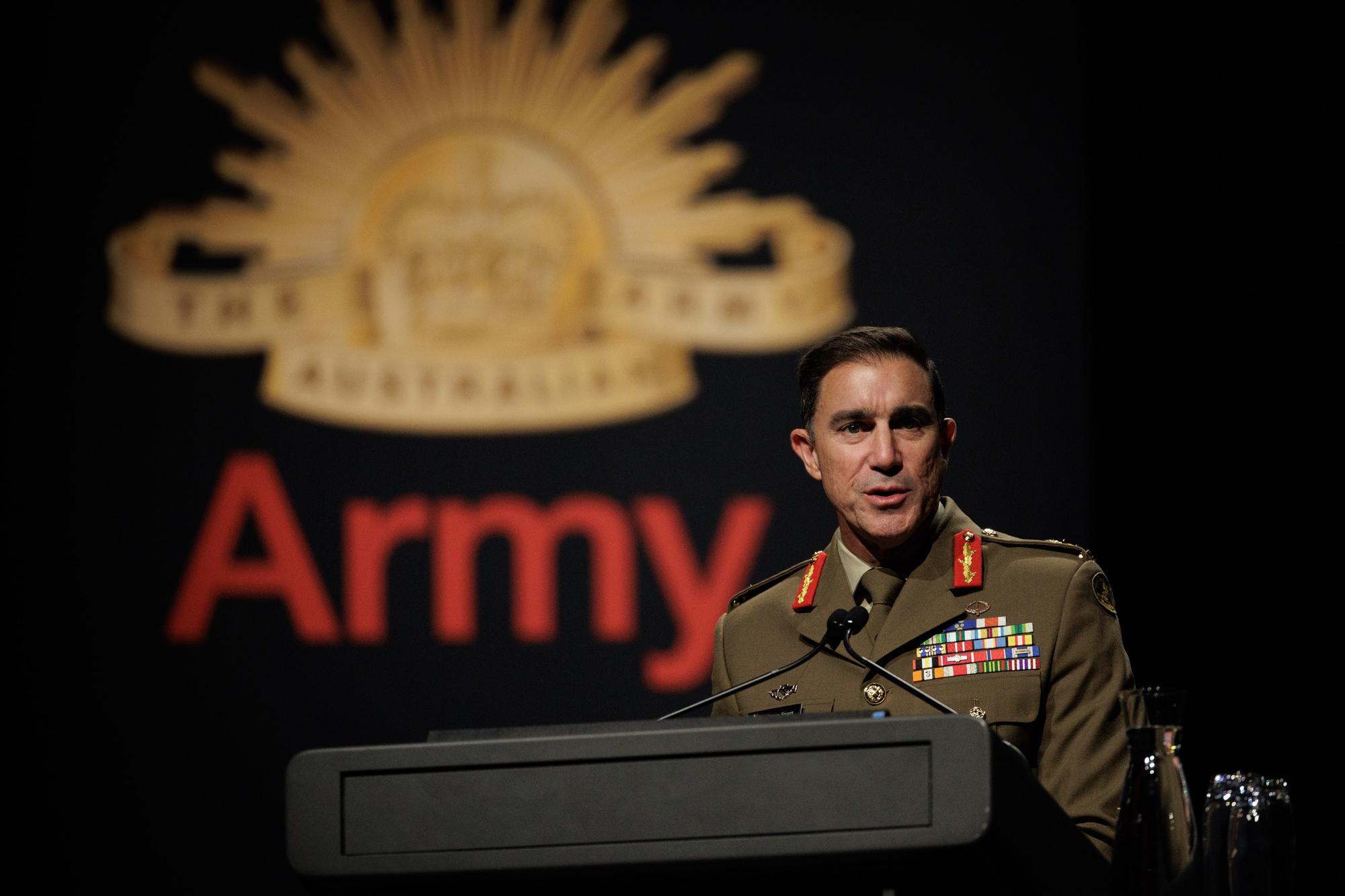
On 12 September, Land Forces 2024, Australia’s largest defence conference and industry exposition, opened to the Chief of Army Symposium for the first time. The symposium brought together almost 2000 attendees from across the Service, allied and partner forces, defence industry and academia for thematic talks on the human face of battle and the state of the army profession.
In his keynote address, the Chief of Army Lieutenant General Simon Stuart, delivered a rousing organisational and public message: the Australian Army will ‘weave together the [intellectual and the moral] elements of fighting power with the physical elements’ to meet Australia’s strategic challenges. This means building public trust and social license, elevating the study of classical military history and theory in army education and training, and strengthening the standard of professionalism expected of soldiers in action.
While not deliberate or planned, the timing of this message coincided with the government’s removal of medals from some senior officers over alleged war crimes committed in Afghanistan under their command. This backdrop worked to highlight the responsibility of Army service personnel to show restraint and good judgement in morally demanding environments. In every sense the address proved a natural successor to Stuart’s 2023 response to the defence strategic review, which put people at the center of the army’s ongoing technological and doctrinal transformation.
The Army’s new capstone document is the best reference point for Australians to understand how the Service will contribute to the national defence strategy. As a vital component of Australia’s national power, the Army is being optimised to secure and control strategic land positions in the littoral and areas inland from the coast. This will involve using long-range strike weapons, battlefield aviation platforms, the combined arms land system and landing craft. With the largest equipment recapitalisation now well in-hand, trust has become the ‘central strategic priority’.
For Stuart, trust can’t be decoupled from social license. Maintaining social license will require building trust between the Army’s teams and with Australian communities—noting that the army serves, and recruits from, the citizenry. The Army is well-placed to leverage this connection. Around 43,500 soldiers operate from 157 bases nationwide, many of which are in the north, and all live and work in their community. And every soldier accepts a responsibility to ethically apply lethal force and may give their lives to defend Australia and its interests—the two sides of the ‘unlimited liability contract’, as first outlined by General Sir John Hackett in 1962. Both the army and society writ large are obliged to honour that commitment.
Responding to the release of final royal commission report into veteran suicide, Stuart reasoned that new learning systems were needed to hard-wire adaptation into the soldiering profession. Leading by example, Stuart quoted or cited at least 10 scholarly works in his remarks; a tactic reinforcing the idea that soldiers should be avid readers and students of military history, theory and philosophy. That less than 10 percent of graduates at the Australian Defence Force Academy elect to study Australian military history each year drove the point home. In his experience, a deep understanding of the art and science of war is vital to ensure soldiers are equipped to reconcile their instinct for self-preservation and sense of honour on the battlefield.
Alongside more thorough learning, the Army will engage in period of reflection to move beyond what Stuart called the ‘Long Shadow of Afghanistan’ in preparation for the future fight. To this end, Stuart committed to undertake a ‘first principles’ review of the key elements of the profession—the first since 1947.
The remainder of the symposium featured presentations from Dr Jack Watling, Senior Research Fellow for Land Warfare, Royal United Services Institute, and General David H. Berger, the former 38th Commandant of the United States Marine Corps, and architect of the USMC’s ‘Future Force 2030’ transformation.
Two moderated panels with civilians and senior ranking military officials from allied and partner nations then considered the need to do things differently amidst increasing great power competition and risks of conflict. The discussions explored novel ways to promote readiness, resource stewardship and the importance of land forces to regional stability and security.
The public can expect an update from Stuart on progress in the coming months and further detail outlining next steps to achieve the Army’s strategic priorities sometime in 2025.
It’s clear the Army is embracing its role as an essential enabler of force protection and projection for the ADF with maturity and humility. Stuart’s remarks should give the public and the international community confidence that the Australian Army will realise the full potential of the profession. In this, as in war, according to Stuart, there can be no substitute for victory.